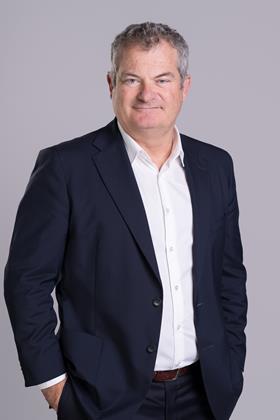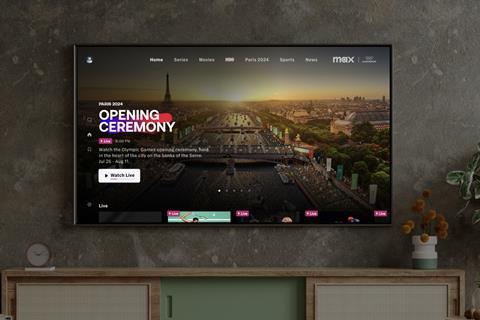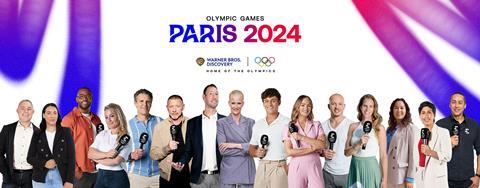Scott Young, Warner Bros. Discovery (WBD) Sports, Europe, explains how on-the-ground coverage and dynamic studio setups are key to delivering Paris 2024 in 19 languages.
In its first Summer Olympic Games since merging in 2022, Warner Bros. Discovery (WBD) is preparing for what it believes is the most unique broadcast operation of any rights holder from Paris.

Like other broadcasters, it is promising to deliver all 3,800 hours of live competition that host agency Olympic Broadcasting Services (OBS) will produce, but unlike, say NBC, it will tailor it to 19 languages across 47 markets.
“That would arguably be what sets us apart from any other broadcaster,” says Scott Young, Group SVP, Content, Production and Business Operations at WBD Sports, Europe. “The principal idea is, how do you create a plug-and-play dynamic platform that isn’t wedded to any one studio, or any particular camera, which is only for that market? How do you make it work across 47 markets?”
Recent Olympics covered by Discovery on Eurosport featured the XR studio ‘Cube’ which was used to teleport athletes into studio presentations. That has been abandoned in favour of being “immersive around the city and the sports, closer to the athletes.”
Read more UK general election: Sky News leverages immersive sports studio to transform election night coverage

Young explains: “The Cube studio was particularly useful when the Games were in Pyeongchang, Tokyo and Beijing; with challenging time zones, remote locations, with two during winter and one in the Pandemic, where accessibility and portability were a challenge, if not extremely restricted.
“Paris ‘24 is a very different style of production,” he says. “We’re using an on-base, in-venue closeness to the athletes and the story. We’ve taken a very clear production plan to be on the ground rather than to be in a technical environment.”
Studio setup
There’s also less need for a virtual and remote production technique from Paris given that this is also the headquarters of Eurosport.

It has created a single host destination called WBD House on the rooftop of the 5-star Hôtel Raphael, emblematic of Roaring Twenties Parisian glamour, near the Arc de Triomphe with views along the Trocadéro.
On the rooftop are four multi-cam studios, three stand-up positions (including one for WBD news channel CNN) and remote RF cameras.
Young adds: “This will create an environment where we can tell the story of the Olympic Games into a single market environment (studio) and transform that into a multi-market rooftop where guests, celebrities and experts can move from country to country.
“A main host set can move from one ‘country’ to another. At the flick of a switch, we can make that work in the UK, France, or Norway. It’s a truly immersive broadcasting experience and location that serves a very unique broadcasting platform like ours.”
Continuing, Young says: “Any one of our four studio locations could do a breakfast show in the UK and half an hour later it could do a mid-morning program in Sweden, half an hour later again it could be a France mid-afternoon program. We are dropping in different talent and leaving the technology the same.”
“So rather than building out individual studios for every market, which would be an astronomical undertaking, and frankly, not really necessary, we’ve created a dynamic environment where we can move the technology around to suit a particular market.”
In addition, WBD has live stand-up and studio presentations at different ‘houses’ located across Paris. Houses are run by each country’s local organising committee and are open to the public.
“Some of our markets also have studios local to them where they’ve kept presenters and experts back at base. That means they don’t solely rely on operating hours in Paris. We have many commentators operating remotely as well as on-site, and we have interviewers in every location at every mix zone for every sport.”
Most of these interviewers are multilingual so they can chat to athletes irrespective of their nationality and language. This content is then distributed through WBD’s single media platform to every market.
WBD is able to draw on the resources of stablemate TNT Sports in Atlanta to create elements such as longer-form highlight reels, short bumpers and teasers, and emotive clips. These are routed back to Europe for local editorial teams to build programming (WBD not having rights to the Olympics in North America).
“We have a 20-strong editing team working in Atlanta,” Young says. “Once competition finishes each night, they’ll be cutting clips and sending them back into the central server so when every market wakes up in the morning they’ll be able to draw down a series of content that’s been edited by a team of people who are very focused on selling sport.”
Several producers, directors and reporters normally based in Atlanta will be on-site in Paris assisting with WBD production on the ground.
“The shorter form content is for our web, app and social teams. Longer format reviews and previews will be used in breakfast programs,” explains Young. “Our teams across Europe will wake up each morning able to choose different title sequences already pre-edited.”
“It’s a really powerful resource that produces a lot of sports content in the US that we’re able to turn to our advantage for the Olympic Games here. The relevance of this is not lost on the fact that the next Olympics are in Los Angeles.”
AI and timestamps
Unlike OBS, the broadcaster is not using AI in its editing operation. “We don’t have a need for that,” states Young. “We’ve yet to truly flesh out how AI is going to benefit the way in which we tell the story of live sport and of an athlete competing. I don’t think it’s too far off, and I’m quite sure AI will have a much more impactful role at LA ’28, but AI is not a driving force of technology for us at Paris 2024.”
A key feature for WBD on Discovery+ and Max are timeline markers and event alerts for 12 sports. These will allow users to navigate to the points in the action that they wish to view.
“Whether you’re on X or Instagram the alerts will remind you that a key moment like a Gold medal has taken place,” Young says. “You can then go to that stream, click on the timeline marker, and find that moment without scrolling through hours of broadcast. I think that’s a fairly revolutionary way of hopping around sports, for those that are a multi-sport viewer rather than wedded to a single sport.”
Broadcasting formats
The main Eurosport channel will air Olympics action in UHD 4K HDR but this format will not be made available on its streaming services. Bandwidth being the main issue but also that viewing UHD HDR on mobile devices is problematic outside of everyone having cheap 5G plans.

“We would probably have significant issues if we tried to do the full-fat version across every sport live on a streaming platform,” Young says.
“We will broadcast HDR for certain sports but we took the decision a while ago with the streaming team that UHD across every feed was not going to be the product that would set us apart from the competition. Our proposition is in making sure we broadcast every sport, live and letting an audience choose what they want to watch, when they want to watch it. That was more of a priority than broadcasting UHD.”
Young says WBD has worked closely with OBS since Tokyo to ensure it gets the innovations it wants.
“We spent a lot of time talking with OBS about making sure that innovation does flow through and I think what they have presented to us and all rights holders is a pretty extraordinary package of coverage for Paris 2024.”
Read more UEFA relegates UHD for Euro 2024 and Champions League Final
Viewer journey
The broadcaster began seeding coverage of the Games a year ago in its Road to Paris 2024 programming. Several other behind-the-scenes programs have been released or are about to be released that raise awareness of an athlete’s journey.

Like OBS, WBD is keenly aware of guiding fans through the rules and performances of sports that may only see the light every four years.
The traditional Olympic sports of athletics or boxing are fairly well known but there’s an array of more niche sports that only get the mainstream spotlight at the Olympics.
Take breaking (break dancing), which debuted at the 2018 Youth Olympics in Buenos Aires, and makes the leap to an elite sport for Paris 24. How does the audience understand whether the athlete has achieved good or great results?
“That’s where a combination of different camera angles, graphics and different explainers will really help our audience through 17 days of competition,” Young says.
Breaking is a subjective, artistic discipline so WBD Sports will have experts on hand to introduce these artists to a sports audience and explain how judges came to a decision.”
Read more Multi-format shoulder programming takes Centre Court at Wimbledon
























No comments yet